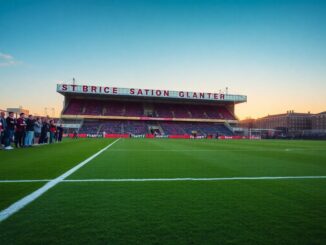What does a rapid sell-out of lifestyle products truly indicate about market fit and sustainability?

Topics covered
The recent sell-out of new products from the Duchess of Sussex’s lifestyle brand raises an important question: is this a sign of genuine product-market fit, or just a fleeting trend? As someone who has seen the rise and fall of countless startups, I can tell you that quick sales figures often mask deeper issues.
Let’s take a closer look at the business dynamics at play here and what they might mean for sustainability in this marketplace.
Digging into the Numbers
When a product line launches and sells out within hours, it’s easy to get swept up in the excitement.
But hold on a second—what does this really mean for the long-term viability of the brand? The Duchess’s new offerings, which range from artisanal products priced between $9 and $28, may have flown off the virtual shelves, but we need to dive deeper into metrics like churn rate, customer acquisition costs (CAC), and lifetime value (LTV) of these new customers.
Ideally, product launches should reflect stable demand, but the reality often paints a different picture. Rapid sell-outs can indicate poor inventory management or a marketing strategy that leans heavily on hype rather than genuine customer engagement. A sustainable product needs not only a robust initial interest but also ongoing customer loyalty. So, here’s the real kicker: how many of these excited customers will actually return for future purchases? If the churn rate is high, that initial buzz might just be a blip on the sales radar.
Lessons from Successes and Failures
Look around in the lifestyle brand space, and you’ll find plenty of tales of initial success that eventually fizzle out. Take, for example, a well-known celebrity who launched a beauty line that sold out in record time thanks to the hype. However, subsequent releases struggled to maintain that interest, ultimately leading to a significant drop in sales. The takeaway? Sustainable growth hinges on understanding your market and consistently engaging your customer base.
Conversely, brands that invest time in understanding their customers and adapting their offerings are often the ones that enjoy prolonged success. Companies that prioritize customer feedback, retention strategies, and product quality tend to thrive in the long run. These success stories remind us that aligning product offerings with genuine consumer needs is crucial, rather than simply riding the latest wave of popularity.
Valuable Lessons for Founders and Product Managers
For those looking to launch their own brands or products, here’s a key takeaway: initial sales figures can be misleading. It’s essential to build a solid business model that prioritizes sustainable growth. Start by really getting to know your target market and what they want. Gather data not just on sales, but also on customer behavior, satisfaction, and feedback.
Moreover, having a clear strategy for managing inventory and setting customer expectations is imperative. When products sell out too quickly, it often leads to frustration among consumers, which can damage brand loyalty over time. Instead, consider adopting a phased launch approach, allowing for more manageable inventory and the chance to gauge initial consumer reactions before scaling up.
Actionable Takeaways
In summary, while the initial sell-out of the Duchess’s products may look like a success, it’s crucial to look beyond the hype. Sustainable business practices, a clear understanding of the underlying numbers, and a commitment to building long-term customer relationships are what truly define success in the lifestyle brand sector. Focus on creating real value for your customers and ensuring that your offerings genuinely align with their needs. Ultimately, it’s the consistent, sustainable growth that will matter most, not just the thrill of a product launch.




